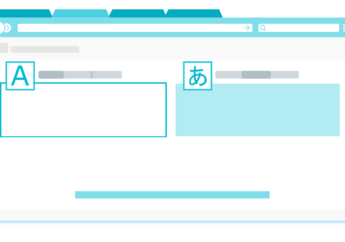The Work After Creating Your Business Domain
by Mashum Mollah Business Planning & Opportunities Published on: 04 November 2020 Last Updated on: 18 December 2021

It’s been 35 years since domains started becoming available and widely used to stake out a specific territory and address on the Internet. What started with the veritable .com location, which is still the premium location to have when they work, has become an entire family of Internet addresses today for all kinds of communication, entities, organizations, and businesses. From 1985 to 1992, only 15,000 addresses had an official record and registration. Today, that same .com category alone represents easily over 135 million addresses, and that means a great name that stands out is worth gold to a business.
While thinking up domain names for online business presences online might seem like the hardest part, it’s actually far easier than what comes next. That’s because owners have to pay attention to three more issues after the name has been created. The first part is what is expected: the registration of the name officially and then maintaining it. This is easy enough if one registers the name for a few years at first instead of the basic one year. It gives the business time to get everything settled and set up without rushing to be perfect in a short 12 months. The second aspect is domain name enforcement which involved copyright legal protections. And the third aspect involves preventing electronic counterfeiting.
The Registration Aspect:
The first thing that you need to consider when buying a domain name is which platform you are using. You want to go for a platform that can help you with additional mailbox support, multi-device integrations, free SSL certifications, as well as discounts on your web hosting needs. Great platforms like gandi.net provide a one-stop solution to all businesses that are looking at purchasing domain names and registration. Make sure to look at the privacy and safety aspects of the platform as well.
As most discover or realize when they go to create a domain name by technical request, a domain registration service becomes the essential go-between in the middle with the requesting business on one side and the registration keepers on the other side. The domain service does its job taking care of all the filing and documentation while the business requesting pays for the cost and provides the information in the first place. The registration keepers then record the file and keep it associated with the business on file until the license expires, renews, or is exchanged to another party.
The key point to remember is that the business does not own the domain itself. This is simply part of the fabric of the Internet infrastructure. However, the business does own the license to the given domain and will do so until that license ends. The maintenance of the domain is keeping that license valid, paid up to date, and registered. This seems simple enough, but even the biggest corporations can forget to pay their license, as some companies have found out in embarrassing ways.
While a business can have a license to a domain if it lapses anyone else can technically buy that license in the gap and take it over. Then they can literally create an entirely different website at that domain. This is where domain name enforcement comes into play.
Enforcing a Name:
What’s the difference between a name and a domain name? Technically one is on the Internet and the other can be the same as a domain as well as a function off of the Internet as well. However, they don’t necessarily have the same owner if it were up to the technology side of things. And that can represent a huge risk for business owners trying to protect their territory stake in the digital world.
In the traditional world, a name is protected by trademark rights. Those have to be established with the federal government and registered. Once done, nobody is allowed to use the same name for their business or product. However, there are no trademark police, per se, that go after problems. Instead, a businessperson who owns the trademark has to use the civil courts to enforce their rights.
So, if a business has a valuable name, it has to be both trademarked and protected. It’s in this respect that a domain stays in the hands of the business that registered it. Even if the license lapses, the second party can’t automatically use the name for its own business. The trademark owns the name even if the Internet address is taken by someone else. This is how companies have protected themselves from entirely losing their increasingly valuable digital reputation. However, a trademark doesn’t automatically give back the lost domain, so maintenance matters just as much here as well. By having both protected the business covers both bases and possibilities of loss.
Counterfeiting:
The last aspect, the counterfeiting risk, is a sleight of hand issue. While the culprit doesn’t take the actual domain, he can misdirect traffic with a close enough name or a subdomain fake. The more overt counterfeit is an actual Internet hack where the address is spoofed entirely and looks like the real thing. Both steal Internet traffic intending to look for an authentic business and duped into looking for something else. While your business won’t be able to entirely stop similar site names from being created, you can actively stay on top of your domain maintenance as well as actively shut down any sites that outright copy yours. The way to do this is to focus on the domain service hosting the record and remind them of their legal obligations. Many will shut down the offending site quickly as soon as they served with a valid trademark ownership assertion. Again, it won’t stop all counterfeiting of your site, but the approach will staunch quite a bit with very little effort.
Your domain is literally your business’ representation online and in the digital world. When you create it, the work doesn’t stop. So, be prepared to protect it and your effort. It literally is your business name online.
Read Also:



































































































